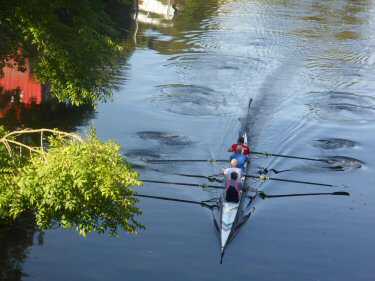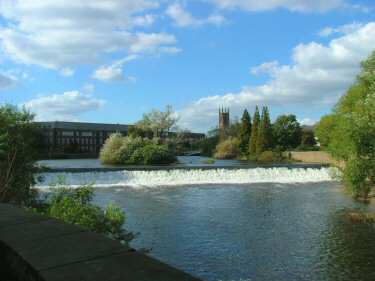A to Z - HIGHLIGHTS OF DERBY AND DISTRICT - PART 13
The A to Z – highlights of Derby and District is a 19-part series and will be published weekly.
Quad – Riverside Gardens
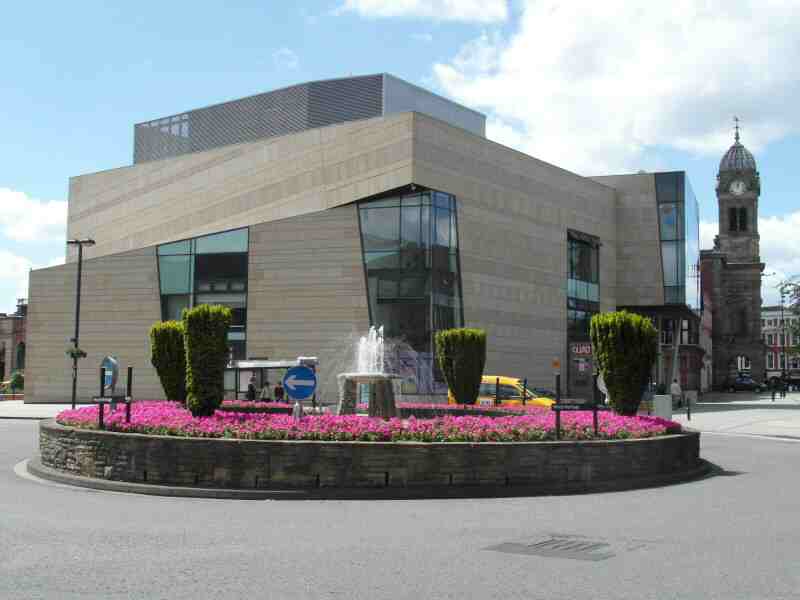
THE QUAD
The Quad, a registered charity, opened in September 2008 and is proving very popular. It is an £11 million purpose-built centre for art and film, with a gallery, two cinema screens, a café bar and a workshop that anyone can hire. Quad’s activities generate millions of pounds in terms of additional and direct spending with local suppliers as well as positive national and international media coverage for Derby.
QUARNDON
One mile north of the Derby suburb of Allestree, Quarndon sits in a slightly elevated position approached by four minor roads. In the 18th and early 19th centuries, visitors were attracted by its chalybeate springs as the water was said to have health-giving properties. St Paul’s Church was built in 1872/74 in the mid-13th century style. In addition to services, the church hosts regular community events.
RADBOURNE
Radbourne is a tiny village in the heart of the countryside despite only being a short distance from Mickleover. It has an ancient church, St Andrew’s, as well as Radbourne hall and several cottages. The Manor of Radbourne has been held by the Chandos family since the time of the Norman Conquest. The present house was built in about 1739. Erasmus Darwin lived there for two years.
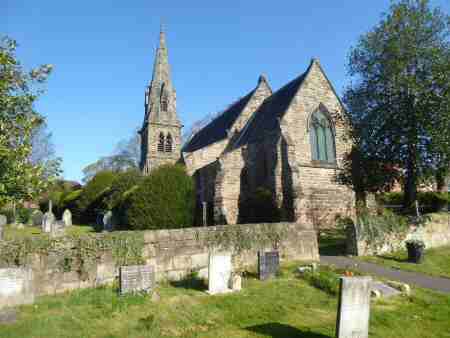
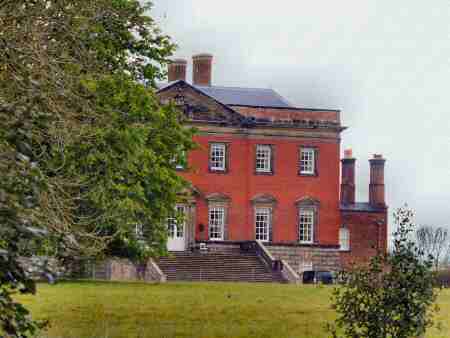
RADIO DERBY
In 1971, two months before it was due to officially start broadcasting. Radio Derby went on air to cover the Rolls-Royce crash from a temporary studio at Sutton Coldfield. In 2011, the station became the first BBC local radio station to be awarded the prestigious ‘Station of the Year’ trophy for its category. The highly regarded station has also won several other awards.
RAILWAY BLUE PLAQUE – WILLIAM TOWLE
Given the title of ‘Father of railway catering’, William Towle had a blue plaque unveiled outside the Hallmark Hotel. Where he worked when it was known as the Midland Hotel. In March 1874, the first lunch ever to be served on board a train was handed out by Towle. He later managed the railway hotel at St Pancras Station which earned a reputation for being one of the finest in the world. He also controlled catering for the Midland Railway Group.
RAILWAY BRIDGE OVER RIVER DERWENT
Five Arches railway bridge dates back to 1839 when it was constructed. It crossed the River Derwent to the north of the station and was paid for by the North Midland Railway, and remains in use today. The girder bridge over the former Derby Canal paid for by the Midland Counties Railway, is now dominated by the modern road viaduct carrying Pride Parkway over the railway.



RAILWAY CENOTAPH
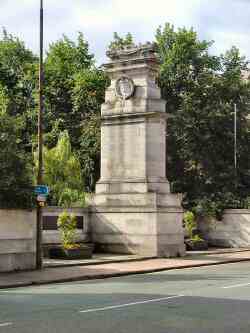
The Railway Cenotaph is situated on Midland Road near the station and was erected in 1921 to commemorate the Midland Railway employees that lost their lives in the First World War. It was designed by Sir Edwin Lutyens who also designed the Cenotaph at Westminster in London. The memorial was listed as Grade II by English Heritage on 24 February 1977.
RAILWAY INSTITUTE
Ten years after the arrival of the railway in Derby, the Railway Institute was founded for Midland Railway employees. Erected in 1892, with its name spelt out in terracotta facing bricks, looking down onto Railway Terrace. It was opened in 1894, as a cultural centre for railway workers. At one time it contained a library of 18,000 books, a concert hall with a stage and sitting for 500 people.
RAILWAY TERRACE
To accommodate the more senior Midland Railway staff, Jackson and Thompson built a triangular block of streets called North Street (now Calvert Street), Midland Place and Railway Terrace. The initial letter from the three streets formed the initials NMR, which stands for North Midland Railway. The two smaller squares, Leeds Place and Sheffield Place continue the railway theme called after cities on the line.
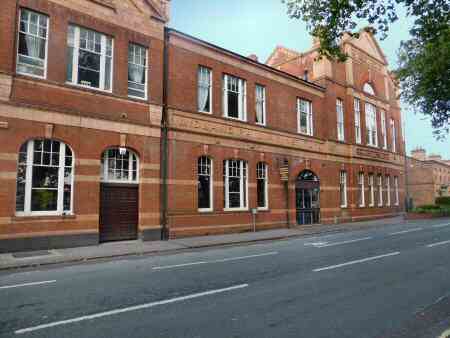
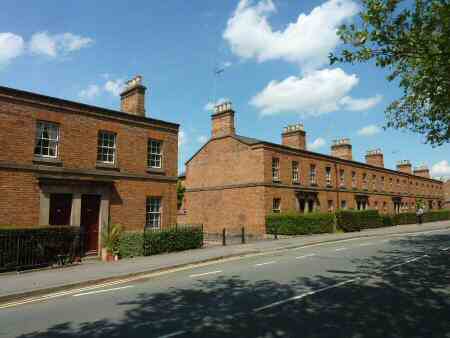
DERBY RAM
The statue was created in 1994 by sculptor Michael Pegler. The ram has played an important role in Derby Regimental history since 1858 when it first became a mascot. According to military history, the commanding officer of the regiment saw a fine ram tethered in an Indian temple yard. He acquired the ram, which was the beginning of a long, illustrious career for the animal and its successors.
RIVER DERWENT
The Derwent rises at Swains Greave between Bleaklow and Howden Moors. It flows south through Derbyshire for its entire journey before merging with the River Trent near Shardlow. More than any other river its waters have played a vital part in driving mill machinery, that placed Derbyshire at the forefront of the Industrial Revolution. In December 2001, the 15-mile stretch of the Derwent Valley from Matlock Bath to Derby was designated by UNESCO as a cultural World Heritage Site. The citation states: ‘The cultural landscape of the Derwent Valley is of outstanding significance because it was here that the modern factory system was established to accommodate the new technology for spinning cotton developed by Richard Arkwright. The insertion of industrial establishments into a rural landscape necessitated the construction of housing for the workers in the mills, and the resulting settlements created an exceptional industrial landscape that has retained its qualities over two centuries.’
RIVERSIDE GARDENS
The Riverside Gardens were opened to the public in 1933, although the official opening ceremony did not take place until the following year. The gardens have changed considerably from the original design, which included a large formal pond planted with lilies complete with two large bronze turtle sculptures. The turtles were subsequently transferred to Allestree Hall but have now been returned following the gardens being designed.

